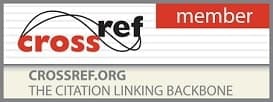- Printed Journal
- Indexed Journal
- Refereed Journal
- Peer Reviewed Journal
P-ISSN: 2394-1685 | E-ISSN: 2394-1693 | CODEN: IJPEJB
Impact Factor (RJIF): 5.38
2023, Vol. 10, Issue 3, Part B
A narrative review on the effectiveness of plyometric training on volleyballers performance
Author(s): Amit Kumar Singh and Dr. Pravin Kumar
Abstract:
This narrative review aims to provide a comprehensive overview of the effectiveness of plyometric training on volleyball players’ performance, discuss the current limitations in the literature, and offer practical recommendations for coaches and trainers. Plyometric training is a widely used method for improving athletic performance, particularly in sports requiring explosive movements, such as volleyball. The review covers the effects of plyometric training on various aspects of volleyball performance, including jump performance (vertical, broad, and spike jumps), agility and speed, strength and power, and injury prevention and rehabilitation.
The existing literature suggests that plyometric training can enhance volleyball performance by improving jump height, agility, speed, strength, and power while also contributing to injury prevention and rehabilitation. However, several considerations and limitations should be taken into account when designing and implementing plyometric training programs for volleyball players, such as age and skill level, individual differences and specificity, and the risk of injury and overtraining. The review also highlights limitations in the existing literature, including small sample sizes, a focus on short-term interventions, and a lack of research investigating interactions with other training modalities.
Practical recommendations are provided for coaches and trainers to effectively implement plyometric training for volleyball players, taking into account the athletes’ age, skill level, and individual differences. These recommendations include appropriate exercise selection and progression, integration with other training methods, and close monitoring of athletes’ responses to ensure proper progression, recovery, and technique. Future research directions are proposed to address the limitations in the existing literature and explore the optimal strategies for implementing plyometric training in volleyball players of different ages, skill levels, and positions.
It is concluded that plyometric training is a valuable tool for enhancing volleyball performance when appropriately designed and monitored. By understanding the principles of plyometric training, the specific effects on various aspects of performance, and the considerations and limitations associated with its implementation, coaches and trainers can optimize the benefits of plyometric training for their athletes.
Pages: 89-93 | 138 Views 43 Downloads
Download Full Article: Click Here
How to cite this article:
Amit Kumar Singh, Dr. Pravin Kumar. A narrative review on the effectiveness of plyometric training on volleyballers performance. Int J Phys Educ Sports Health 2023;10(3):89-93.








 Research Journals
Research Journals